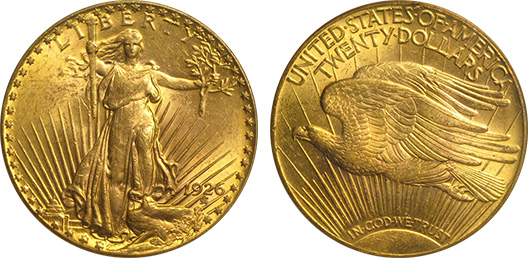Numismatic
Why You Need the Professional Numismatists Guild

No rare coin or precious metals buyer or seller likes that uncomfortable feeling they get when working with a dealer they’re not sure about. The Professional Numismatists Guild has virtually eliminated that feeling for thousands of coin, paper money and precious metals collectors and investors throughout the U.S.
The Numismatist —the official publication of the American Numismatic Association —focuses on the fun, the history, and the allure of coin collecting.
Founded in 1955, the PNG’s motto is Knowledge, Integrity, Responsibility, all the essential hallmarks of a reputable coin dealer. These are the key attributes you should look for when you’re choosing a rare coin dealer, paper money expert, or precious metals dealer. Every PNG member dealer has them, or they wouldn’t be part of our association.
The PNG logo has become the symbol of professionalism in the numismatic field. That’s why NGC – one of the largest coin grading services in the world – proudly displays the PNG logo on every one of its coin holders, more than a million annually. That’s testimony to the power of the PNG brand, and its membership.
Whether you’re looking to buy a few nice coins or investing a small fortune, why would you ever do business with any rare coin or precious metals dealer without PNG’s safeguards in place?
And for dealers whose reputation for integrity is everything,a PNG membership should be a given.
Numismatics Coins
The PNG Foundation:
- Numismatics is a growing field that attracts both history lovers and coin collectors. The value within numismatics is high because Precious Metals and bullion have continued to gain notoriety in the public.
- Of or relating to coins or currency. Of or relating to numismatics. French numismatique, from Late Latin numisma, numismat-, coin, variant of Latin nomisma, from Greek, custom, current coin, from nomizein, to have in use, from nomos, custom; see nem- in Indo-European roots.
Find Out How Much Your Coins Are Worth
The most frequent question asked by collectors is, “what are my coins worth?” It’s one of the most fundamental coin-related inquiries we receive at the Professional Numismatists Guild.
As part of our broad commitment to education about coins, it’s our pleasure to help you determine the value of your coins. In partnership with Numismatic Guaranty Corporation, we provide an incredibly useful tool – the NGC Price Guides.
If your coins are in good condition, they could possibly be worth a sizeable amount of money. Just click the links below and you can find out the market value of any U.S. or World coin, including yours.
The Price Guides are simple to use. Just follow these easy steps:
Numismatic Guaranty Corporation
Click Here to Access the NGC U.S. Coin Price Guide
Click Here to Access the NGC World Coin Price Guide
- Click on the denomination of your coin. For example, Nickels:

- Click on the date range your coin falls under. In this case, the nickel is a 1930, so it’s within the 1913-1938 date range.
- The 1930 nickel shown has no mintmark, so once you arrive at the Buffalo Five Cents (1913-1938) page, scroll down to 1930.
Across the menu bar at the top of the page, you’ll notice the grades you can reference, beginning to the right of the eBay link.
Along with rarity, the coin’s grade (condition) is the key factor in determining its value. In the example, a 1930 Nickel with a grade of MS-63 is currently worth about $75.
(Note that the prices shown are forcomparison only and neither NGC nor PNG is bound to their accuracy.)
Coins are graded on a scale of 1 to 70, 70 being a perfectly struck coin with no wear. That’s what the grading numbers on the coin page’s menu bar refer to. [Visit the Grading Scale topic under Coin Grading on the NGC website for an explanation of what the grades mean.]
- If your coin is not in really good condition, it will likely not grade at 55 or higher. You can click on the $ sign button (upper right) to get a wider range of grades. Once you click on the dollar sign button, you will see a full range of grades in the menu bar to the right of the eBay link:
Unless your coin is in really good or uncirculated condition, the chances are it fits into one of these lower grades and corresponding price ranges.
- When you have finished looking up your coin’s price, just click the Return to PNGdealers.org link at the top left to return to the PNG site.
What if you’re fortunate enough to have a coin that is rare and sought-after by collectors?
Some coins, such as the 1937-D 3-Leg Buffalo Nickel [pictured to the right]are quite valuable, even in low grades. If you find a coin like this, you should do two things:
Numismatic Classification
1)Give a PNG member dealer a call and discuss what you have.
2) Unless the dealer tells you otherwise, have the coin graded and authenticated by NGC. Having coins graded and certified can increase their value, in some cases dramatically.
For more detailed information about a coin and its history, you can click on any applicable link on the Price Guides.
There is a wealth of information about how and why coins are graded on the NGC website. Pay particular attention to the Grading Scale topic.
You can also visit NGC’s Coin Grading Guide (under Resources) for more information on how to assign your coin a ballpark grade.
Once you have a general idea of how coin grading works, using the Price Guides to get a general idea of what you have is a snap!